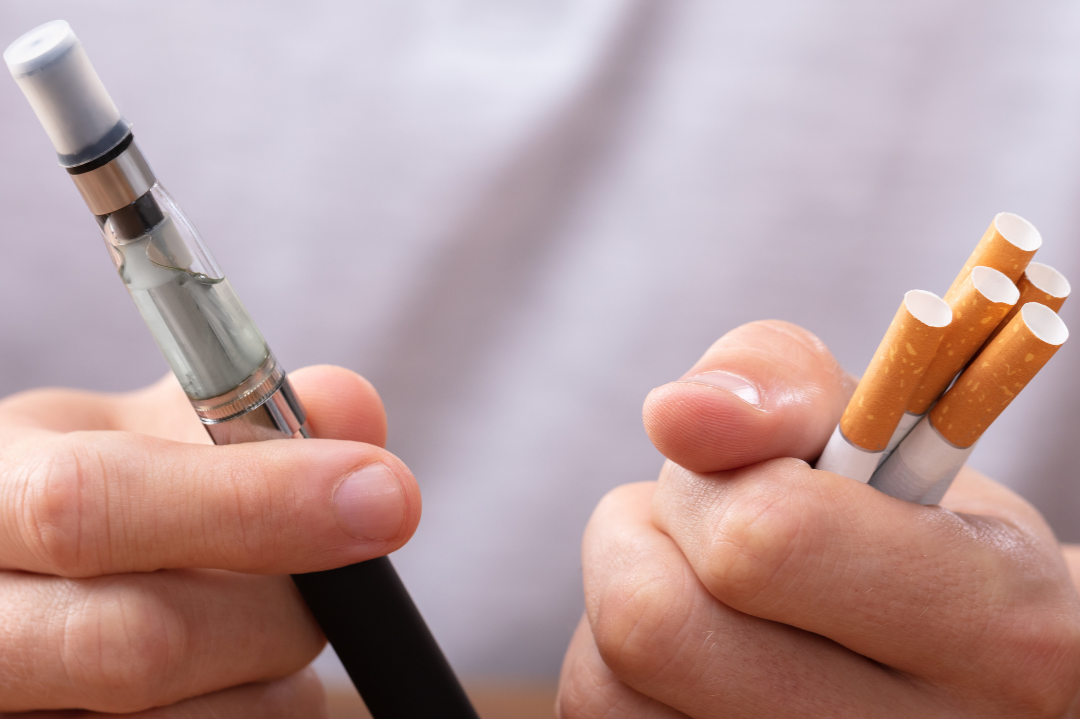Share This Story, Choose Your Platform!
Vaping is the use of an e-Cigarette to smoke and is derived from the word vapor. They are battery operated devices which heat liquids to release a vapor that is inhaled into the lungs of the user. The liquid used to produce the vapours can include propylene, glycol, nicotine, tetrahydrocannabinol (THC), cannabinoid (CBD) oils, flavouring and other substances.
Vaping coats the lungs with potentially harmful chemicals. There are concerns that the vapours are getting deep down into the lungs and causing inflammatory responses. Most users are of the view that vaping is a more acceptable and healthier than actually smoking a cigarette, but I beg to differ.
Studies show that there are lung diseases associated to vaping, some of which include:
- EVALI (e-Cigarette or Vaping use-associated lung injury): Tetrahydrocannabinol (THC) is the substance that produces the high experienced by users. Vitamin E acetate is used as an additive in THC. Although Vitamin E is found in certain foods and health supplements and has health benefits if ingested or applied to the skin, it can be dangerous if it is inhaled. It is used as a thickening and delivery agent in e-liquid. Vitamin E acetate has been found to be linked to EVALI (e-cigarette or vaping use-associated lung injury). Diagnosis is through the process of elimination as the symptoms are similar to many other respiratory diseases and include shortness of breath, fever and chills, cough, vomiting, diarrhoea, headache, dizziness, rapid heartrate, and chest pains.
- Popcorn Lung: Bronchiolitis Obliterans also known as “Popcorn Lung” is a condition where the smallest airways of your lungs are damaged and which results in you coughing and feeling short of breath. This condition got the nickname “Popcorn Lung” after workers at a factory that packages microwave popcorn was found to have Bronchiolitis Obliterans more often than other people. This was because of the chemical (Diacetyl) used to flavour microwave popcorn and which causes this disease when breathed in. There are other chemicals that also cause this disease, to name a few: Acetaldehyde (found in the smoke from marijuana), Metal Oxide Fumes (byproduct of welding), Formaldehyde (glues and building materials), Sulphur Dioxide (pollutant released by burning fossil fuels), Ammonia, Chlorine, Nitrogen Oxides, Hydrochloric Acid, Sulphur Mustard. Symptoms include a dry cough, wheezing, chest pains and shortness of breath and will present itself between 2 weeks and 2 months after exposure.
- Lipoid Pneumonia: Vaping related lipoid pneumonia occurs as a result of inhaling oily substances found in e-liquid which sparks an inflammatory response in the lungs. Symptoms include a chronic cough, shortness of breath and coughing up blood or blood-tinged mucus.
- Primary Spontaneous Pneumothorax (Collapsed Lung): Tall, thin people who have a rapid growth period during their adolescent years, may develop blisters at the top of their lungs. Usually, these blisters don’t produce any symptoms, however, with vaping, there is an increased risk of bursting these blisters which will lead to lung collapse. Signs of a collapsed lung include sharp chest or shoulder pain, shortness of breath and difficulty breathing.
- Lung Cancer: Although there is no evidence to support the link between vaping and lung cancer, it is known that smoking tobacco forces tiny particles to be deposited deep in the bronchial tree which can lead to the development of cancer. So, at this point, it is assumed that this may be true for vaping as well.
- Second-hand Vapor: Second-hand vapor refers to the vapor that someone else exhales and it contains a variety of dangerous substances (e.g. nicotine, ultrafine particles, diacetyl, benzene (chemical found in car exhaust)). Yes, this vapor won’t affect you the same way as direct vaping, but it is still advised that you should avoid it where possible.
Treatment of the above diagnosis:
- EVALI – Antibiotics and corticosteroids for the infection and inflammation, hospitalisation in severe cases where the patient struggles to breathe on their own and once the patient is stabilised, scheduled follow-up appointment with a pulmonologist (diagnoses and treats conditions that affect the respiratory system) within 48 hours.
- Popcorn Lung – Antibiotics or steroids to ease the inflammation, medical drugs that will slow down your immune system to help protect your bronchioles from more damage and oxygen to assist in breathing.
- Lipoid Pneumonia – supportive care while the lungs heal on their own and eliminate vaping.
- Primary Spontaneous Pneumothorax (Collapsed Lung) – oxygen and rest but in advanced cases a chest tube may be required to drain leaked oxygen, and/or surgery to repair the hole in the lung.
At this point it is safe to say that a lot remains to be learnt about the impact of vaping on the lungs and whether the lungs can heal from any damage caused by vaping. However, it is worthwhile to note the following regarding smoking:
- Your body will start to repair any damage almost immediately when a person stops smoking cigarettes,
- Lung function will start to improve from 2 weeks to 3 months after quitting, and
- From 1 to 12 months after quitting, some of the symptoms being experienced should improve as the lung structures start to heal.
In summary, vaping is considered a healthier alternative to smoking but early research and testing shows that it is toxic to your lungs and can potentially lead to serious respiratory conditions and complications (similar to smoking). Although, we can safely say that more research is required into the long-term effects of vaping on your lungs, it is safer to STOP VAPING immediately!!!
Author: Omashree Balie

Bibliography:
What Does Vaping Do to Your Lungs? | Johns Hopkins Medicine
E-cigarette or Vaping Use-Associated Lung Injury (EVALI) | American Lung Association


